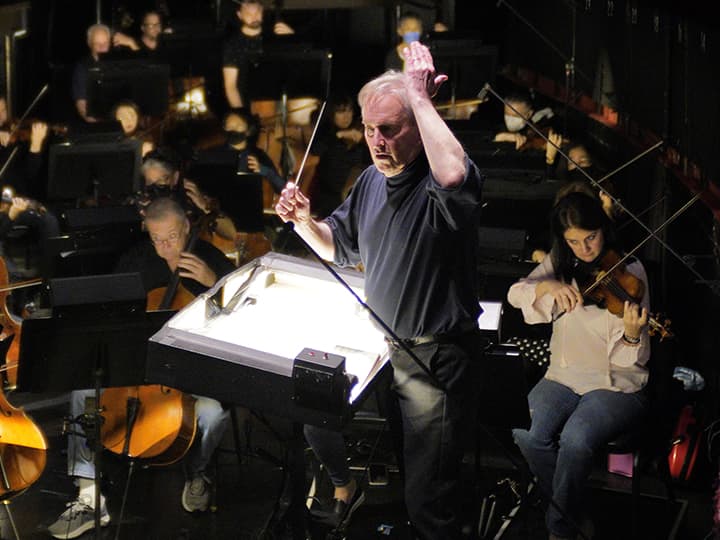Tradition: Why? Why not? Do we really have to choose?
Tradition. Do we observe it? Some of us do. Do we disdain it? Others do. Are we enslaved by it? I hope not. Must we abolish it? I say no. Why do we need it? I’m not sure what the answer is, but based on the evidence, it seems we do. The fact is we needn’t choose between the two, we can have it all!
Mahler called tradition “schlamperei” (laziness, sloppiness). Toscanini called it “the last bad performance.” Just as the best prerequisite to become a celebrity is to already be famous, the precondition for observing a tradition is that it has always been observed. Seemingly, there is a there there.
Let’s look at some of the "classical classics" of traditional holiday music. I am going to skip over Christmas carols and the volumes of popular music. After all, we are an opera company, and our bread and butter is classical music.
The Winter Solstice (Yuletide) was celebrated as the reawakening of the sun and its light long before Christianity conquered the European continent. The Twelve Days of Christmas have Judaic and Teutonic roots, and our notions (for those of us in the Northern Hemisphere, at least) of wintery, snowy forests, extend far backwards in time. Singing carols has its roots in pre-Christian Europe. The word itself, meaning “a dance with joyful singing,” seems to have Celtic roots. Let’s start with three famous and uncontestably great seasonal works, all closely associated with seasonal expectations: Johann Sebastian Bach’s Christmas Oratorio, George Frederic Händel’s Messiah, and Peter Ilych Tchaikovsky’s The Nutcracker.
Bach sets his music to a fusion of paraphrased psalms. Its text and tone suggest joy and celebration even as its form and counterpoint imply the distance of a third-person narrative as well as the vast immensity between God and mankind.
Bach: Christmas Oratorio BWV 248. Conducted by John Eliot Gardiner. Performed by the Monteverdi Choir.
Jauchzet, frohlocket! auf, preiset die Tage
Shout for joy, exult, rise up, glorify the day,
praise what today the highest has done!
Abandon hesitation, banish lamentation,
begin to sing with rejoicing and exaltation!
the highest with glorious choirs,
let us honor the name of our ruler!
That joyful opening incorporates singing, in a decidedly Teutonic mode.
Probably the two most popular seasonal pieces of classical music in American life, which in combination capture the essence of the pre-Christian meaning of “carol,” are Händel’s oratorio Messiah (the singing) and Tchaikovsky’s ballet The Nutcracker (the dancing).
The magnificence of Tchaikovsky’s music speaks, through a clearly secular voice, of the beauty and the distilled light of culture. The Nutcracker, based on a short story by E.T.A. Hoffmann and revised by Alexandre Dumas père, takes place on Christmas Eve in a well-to-do 19th-century European home. It is a long way from Hoffmann’s macabre original story to the warm and charming ballet we know from Tchaikovsky. Christmas is a backdrop to The Nutcracker, not essence. The substance is to be found in the wonderment of Clara’s childlike fantasy and the rich dream world that it reveals. Candyland is derived from Hoffmann’s penultimate chapter and Tchaikovsky develops it until it is almost half of the ballet.
Whereas Tchaikovsky creates a fantasy nestled into a Christmas Eve celebration of the story of Christ’s birth, Messiah actually recounts that story. Christmas and its religious associations are the essence of Händel’s Messiah. Or at least the first of its three parts.
Messiah is an oratorio, a word derived from Latin meaning “place of worship.” The term denotes, with very few exceptions, a work that is religious in nature. Messiah is specific to the story of Christ’s birth, life, death and resurrection, recounted through texts freely adapted from scriptures. One note of clarification: in any discussion of classical music, the word religion is virtually synonymous with Christianity. This simply due to the virtual monopoly that Christian churches held on institutional spirituality throughout Europe.
Handel: Messiah - A Sacred Oratorio. Conducted by Sir Colin Davis. Performed by the London Symphony Orchestra.
And that domination deeply impacted the development of both oratorio and opera. Both are large musical forms with soloists, chorus and orchestra. Both genres are built with dramatic narrative, recounted or acted out by singers. Narration, in the form of recitatives, alternate with reflective solo arias. Below the surface, they are two branches of the same tree.
An oratorio can be sung in a church or concert hall, whereas an opera is conceived for the theater. Religion and theater, however, made for very uncomfortable bedfellows.
Because powerful church authorities prohibited the depiction of religious, biblical or scriptural stories on the stage, oratorio developed primarily of necessity, serving as a haven for any biblical, scriptural or religious works. For that reason, opera and oratorio diverged relatively early.
The apportionment was quite simple: oratorio for sacred stories, and opera for secular stories drawn from Greek and Roman antiquity (thus, pre-Christian), pastorales or comedies. Händel excelled in both arenas, to my mind, because he saw the commonality of musical drama in both genres.
From Messiah’s beginning, the listener is drawn into the drama of Christ’s arrival in history. The introduction, written in a minor key, suggests the momentous and solemn event that is about to take place. The panorama is expanded first through scriptural references and second, more decisively, through the power of music, which opens up a universe of time and place.
Opera plays only a secondary role in Christmas music. The vestigial effects of long past ecclesiastical censorship have kept Christmas and opera largely apart. That is not to say no Christmas operas were written, but they have not imposed themselves on tradition. (Wikipedia lists some 30 of these, including zarzuelas, operettas, and works by Rimsky-Korsakov and Tchaikovsky.)
Romantic opera has two well-known Christmas scenes, but they serve, as in The Nutcracker, to provide backgrounds to the central drama. Giacomo Puccini’s La Bohème offers us Christmas Eve in Paris’ Latin Quarter, but it is essentially scene painting, spectacle and entertainment. The final scene of Jules Massenet’s Werther by contrast, utilizes a children’s Christmas song as a stark counterpoint to the protagonist’s suicide.
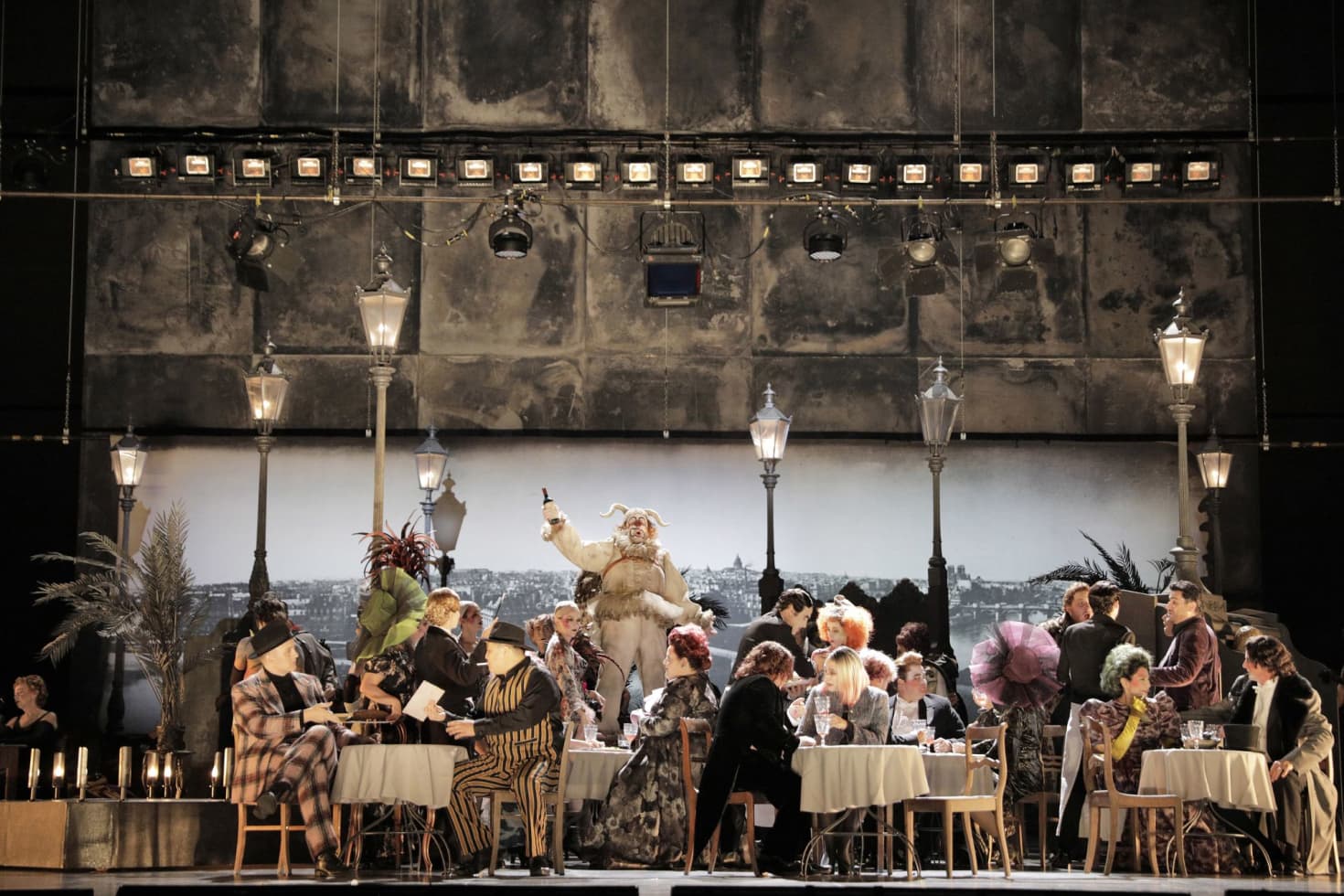
The Christmas Eve celebration at Café Momus, from our 2019 production of "La Bohème" (Photo: Cory Weaver)
In the twentieth century, Gian Carlo Menotti’s Amahl and the Night Visitors, which premiered in 1951, attained great popularity as a children’s opera for several decades. Now considered dated by some, it has fallen into neglect. That judgment is perhaps too severe. In any case, it made its mark as a popular and successful Christmas opera.
I particularly like John Adams’ El Niño. It has been described as a “Nativity Oratorio” and lives in that wonderful zone between opera, oratorio, poetry and drama. Its multi-leveled, bilingual pluralism juxtaposes biblical narrative with the realities of contemporary life. It is very much a work for our time.
But in between the baroque oratorio and the present day stands the imposing 19th century. Two of my favorite works are Franz Liszt’s massive oratorio Christus and Hector Berlioz’s L’Enfance du Christ (The Childhood of Christ). The U.S. rarely hears Berlioz’s Christmas work and it virtually never hears Liszt’s. For those whose curiosity leads them beyond the traditional, hearing these works would be another rich musical experience at Christmas.
There is a story (apocryphal perhaps) that Richard Wagner and Liszt were conversing. Wagner, ever modest, remarked that they together were the two greatest creative geniuses of the 19th century. He then added “we could consider Berlioz as well, but let’s not tell him...it might go to his head.” The ironic humor of the comment aside, it was not far from the truth, and in drawing attention to Liszt and Berlioz, we have an opportunity to appreciate them better.
Christus, like Messiah, is in three parts. The first, devoted to the Nativity story, is entitled “Christmas Oratorio,” just like Bach’s work. (Part Two is “After the Epiphany” and Part Three “The Passion and Resurrection.”) I have conducted and recorded this work, love it and admire it. I recognize that its three-hour length is a problem for modern audiences, but I see no reason why it can’t be divided into its component parts and performed that way.
The Christmas section has five movements. An “Introduction” starts from earth and then hovers in the celestial spheres. It then descends to intone a tender lullaby, representative of the traditional nativity scene. “Pastorale and Angel’s Annunciation” features the soprano soloist and an angelic choir. The unaccompanied hymn “Stabat Mater Speciosa” describes Maria’s joy. (Although written in 1495, the religious poem was neglected until being published in 1852 and Liszt took advantage to set it to music. It is a counterpart to the more famous “Stabat Mater Dolorosa” which will be the pièce de resistance of Part Three.) “Shepherds’ Song at the Manger” combines the proverbial shepherds’ pipes and another pastorale theme. Finally, “The Three Kings” begins with a Beethovenesque march as the Magi approach and the star appears, stopping over the place where the child to be found. The depiction of the Adoration of the Magi and the offering of gold, frankincense and myrrh anticipates Parsifal. An animated coda collects all of these themes together in triumph.
Liszt: Christus Oratorio + Presentation. Conducted by Antal Dorati. Performed by the Hungarian State Orchestra.
Christus is written with that characteristic alchemy that typifies Liszt’s sacred music: Liturgical modes and Gregorian chant freely mixed with his rich and forward-looking harmonic invention. Its overriding feeling is one of extraordinary breadth and spiritual tranquility. It is dominated by pastoral beauty, as if Liszt had distilled the imagery of shepherds and sheep, the Lamb of God, and transmuted it into sound and then spread throughout the entire oratorio.
Both Bach and Händel chose a particular moment to concentrate on that image but Liszt goes much farther. Were I to characterize what makes Christus unique, it would be the pastoral quality that embraces its entirety; the overwhelming feeling it imparts of peace, profound calm (both material and spiritual) and kindness. These characteristics imbue the entire work, even when the literal text does not address them. It is as if deep serenity has enveloped the universe and with it, Liszt’s music.
I am reminded of a somewhat personal story. Many years ago, I gave a copy of my recording of Christus to friends. They were having a difficult time involving family illness. Several years later, my friend told me that she had listened to it every day for a year, and that she would not have managed the strains of daily life without it. She clearly listened to it more than I have but I can relate to the power of consolation that Liszt’s music can afford.
Berlioz’s L’Enfance du Christ displays many of the same attributes as Christus. In particular, he portrays the Holy Family with a very special quality of loving tenderness in a way that has no antecedent. His invented scenario has only a very general resemblances to scriptures.
As always, the composer, who is his own librettist, has his own take on everything. Instead of the conventions of oratorio, he starts from an interior core idea and builds outward, constructing form, content, melody, harmony and rhythm. He ignores inherited forms and infuses dramatic expression into his rather original recounting of Christ’s early years. Essentially basing his story on the second chapter of the Book of Matthew, he freely invents whatever his fancy dictates. What emerges is a charming and sometimes curious but certainly unique collection of scenes.
The characters include a narrator (a tenor, similar to Bach’s Evangelist), a centurion, an officer of the watch named Polydorus, and, most unexpectedly, King Herod, who dominates the entire first part of the three-part structure. The first part is therefore entitled “Herod’s Dream.”
The four-part chorus represents an angelic choir, shepherds, hostile inhabitants of the city of Saïs, and, surprisingly, Hebrew soothsayers summoned by Herod. The chorus only occasionally functions like a standard oratorio chorus, but is given the last word, together with the narrator.
The first scene is invented: a street in Jerusalem, with Roman guards making their nocturnal rounds. There is nothing biblical about this, it is just some imaginative local color. The scene shifts to Herod’s palace, where he recounts his dream. He is no stereotypic villain, but a complex ruler who turns to tyranny and cruelty after hearing the Hebrew soothsayers foretell the birth of an infant king. The first part closes with our first view of the loving Holy Family, and the angels’ warning that they must flee.
In the second part, “The Flight into Egypt,” the shepherds gather and bid farewell to the Holy Family as they flee Herod and depart across the desert. They sing a gentle three-versed sendoff, described by Berlioz as “pastoral naïve mysticism.” This picturesque chorus is the seminal piece from which the rest of L’Enfance du Christ grew. Berlioz originally wrote this as a hoax, in a purposefully archaic style. He claimed that a hitherto unheard-of composer, whose name he invented, was the author. He presented it as a trap to test his critics and detractors and they all failed. The piece was a great success, and the upshot of the critical reaction was that Berlioz would never have been capable of writing such a fine piece. He then attached a piece (an overture) to precede it and one to follow (“The Repose of the Holy Family”) and performed it as a short cantata. In the finale version of L’Enfance, it stands in the middle and is the shortest section.
In the third part, “The Arrival in the City of Saïs,” Joseph knocks on three doors seeking a room. The chorus twice impersonates the hostile inhabitants who, as in the story of Bethlehem, refuse lodging to the Holy Family, who are exhausted from their long trek in the desert. Joseph then knocks on the third door.
In this final section, the work culminates with a resplendent gesture of hospitality, generosity and compassion. As in the parable of the Good Samaritan, a person who ordinarily would be considered an enemy of the Hebrews demonstrates the highest commandment to “love thy neighbor.” An Ishmaelite fathe, an infidel(!) in the words of the Narrator, comforts the family and takes them in. Like Joseph, he is a carpenter by trade, and demonstrates infinite kindness by sharing his home with the Holy Family. They will remain there for a long time, until it is safe to return home.
Berlioz : L’Enfance du Christ. Conducted by James Conlon. Performed by L'Orchestre National de France.
Berlioz’s spiritual message of compassion is placed in the words of the Ishmaelite father. And then a surprise, characteristic of the composer. The father bids his children to entertain the guests with music, a pretext for Berlioz to include a trio for two flutes and harp, probably for no other reason than he wanted to include a deliberate imitation of what might have resembled biblical instruments. Is a trio in three parts meant to represent the three members of the Holy Family?
The narrator proclaims: “thus it happened that the Savior was saved by an infidel” (that word is used for the second time!) and after ten years, they return to the land of their origin, so that the Savior would fulfill his mission of redemption. The narrator and chorus, in awed and gentle tones, pray: “Oh, my soul, oh, my heart, be filled with pure and solemn love, which alone can look toward heaven.” On that gentle and mystical note, L’Enfance quietly concludes.
All in all, it is unlike anything one would expect in 1854, or maybe anytime since. Neither the very imaginative story (written by the composer himself) nor the exquisitely subtle and refined music, have any antecedents.
Berlioz’s approach is so personal and different—at times irregular or asymmetrical, and always unexpected—that it has inspired both attraction and perplexity since the time of its composition. It is unmistakably him, and no one else could have written it.
For those amongst us who are not traditionalists, take a chance this holiday season with these two works which you may not know. I believe you will be amazed and rewarded for your time. (All links are listed below.)
And for those of you who are traditionalists, do the same, while you also immerse yourselves once again in the beauty of Bach, Händel and Tchaikovsky. Why tradition? Why not? We can have the best of both worlds. I intend to listen to all five of these works during the holidays, and to enjoy each of them what them in their different ways. Thus, in the tranquility of my home, I will wait out the pandemic in the best way I know, surrounding myself with music.
Be safe! Be healthy! Happy holidays! Happy New Year!
©James Conlon
December 21, 2020
Click "Read More" for musical links to select pieces mentioned above.
Johann Sebastian Bach: Christmas Oratorio
Christmas Oratorio - John Eliot Gardiner, conductor; English Baroque Soloists (part 1)
Christmas Oratorio - John Eliot Gardiner, conductor; English Baroque Soloists (part 2)
George Frideric Handel: Messiah
Messiah - Sir Colin Davis, conductor; London Symphony Orchestra
Hector Berlioz: L’Enfance du Christ (the Childhood of Christ)
L’Enfance du Christ - James Conlon, conductor; Orchestre National de France
Franz Liszt: Christus
Christus - Antal Doráti, conductor; Hungarian State Orchestra
Pyotr Ilyich Tchaikovsky: The Nutcracker
The Nutcracker - Evgeny Svetlanov, conductor; USSR Symphony Orchestra
Gian Carlo Menotti: Amahl and the Night Visitors
Amahl and the Night Visitors – Thomas Schippers, conductor; original NBC telecast cast
John Adams: El Niño
El Niño - Kent Nagano, conductor; Deutsches Symphonie-Orchester Berlin

